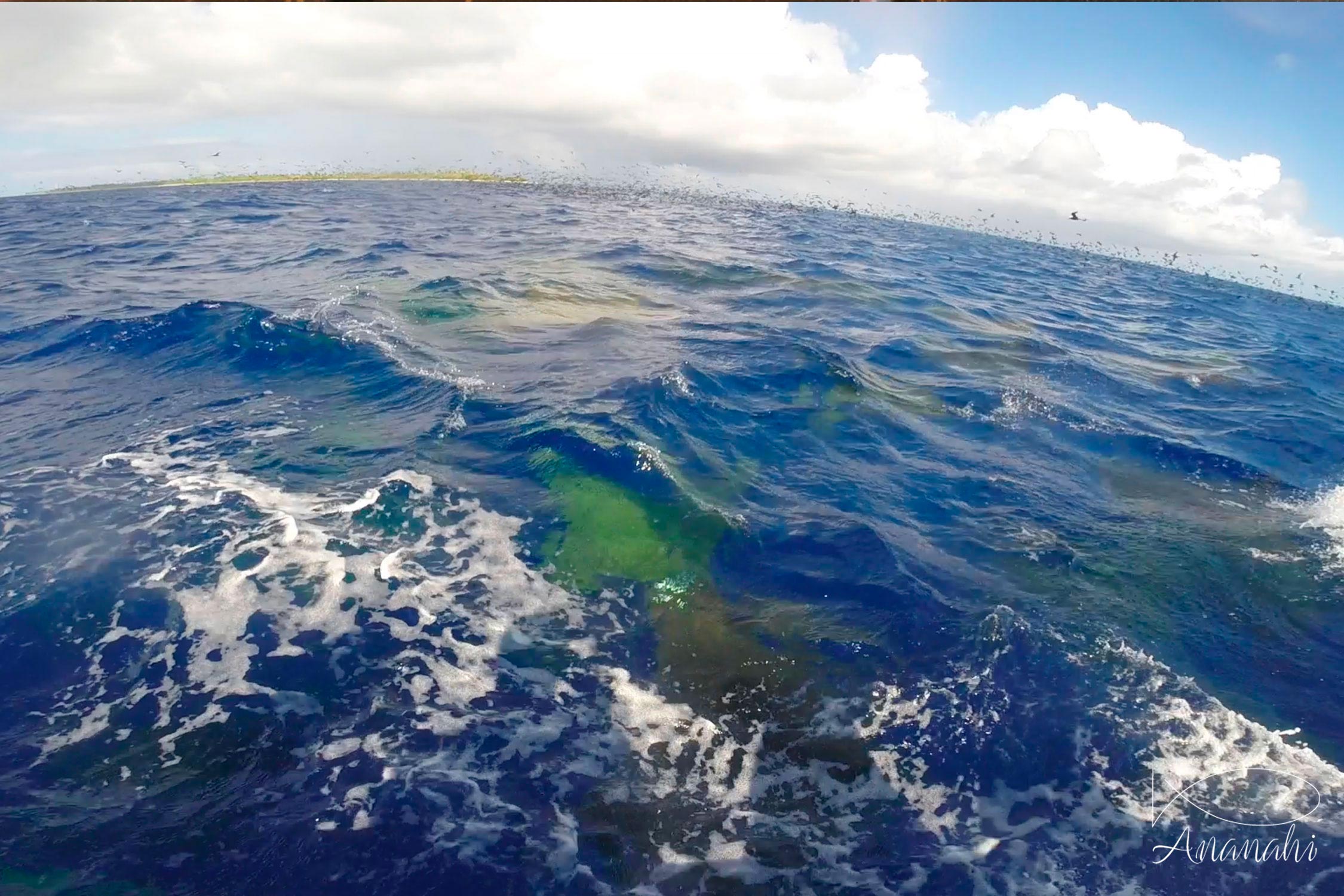
Scientific name: Mobula japanica
Size: Up to 9.8 feet wingspan
Color: Dark blue dorsal, dorsal face, white ventral
Distinguishing feature: A ventral mouth in the center of two straight cephalic horns (not like the manta). You can see a white spot at the end of the dorsal fin.
Where did we see it: French polynesia, Maldives

Scientific name: Mobula japanica
Size: Up to 9.8 feet wingspan
Color: Dark blue dorsal, dorsal face, white ventral
Distinguishing feature: A ventral mouth in the center of two straight cephalic horns (not like the manta). You can see a white spot at the end of the dorsal fin.
Where did we see it: French polynesia, Maldives
This ray is frequently seen in a shoal, from two to a few hundred.
It can also be seen jumping out of the sea water.
There are 9 different species of mobula rays, which are differentiated by details or by their geographical area. However, it is difficult to define these because the species are very similar.
Mammals have a horizontal tail.
Fishes have a vertical fin.
The whale shark is the largest fish in the world!
Some whales are larger, but they are mammals, not fish!
We can hear the bull shark is very dangerous because of attacks near La Réunion island.
However, tens of them are living at 600 feet from the famous beach of Playa Del Carmen in Mexico. And there are no attacks.